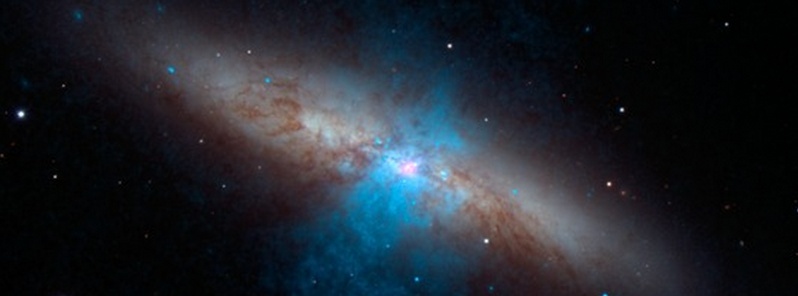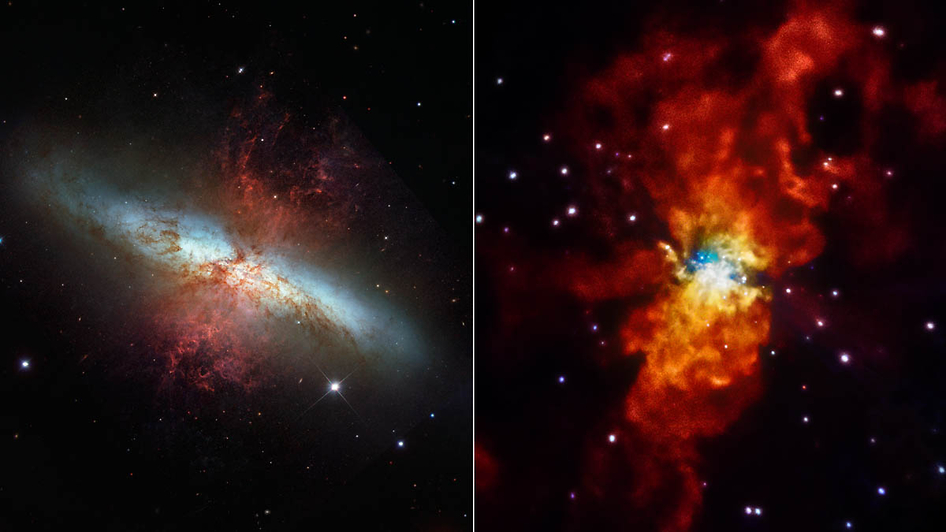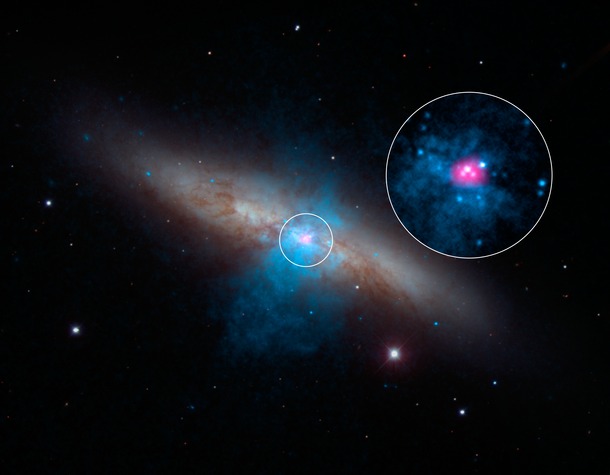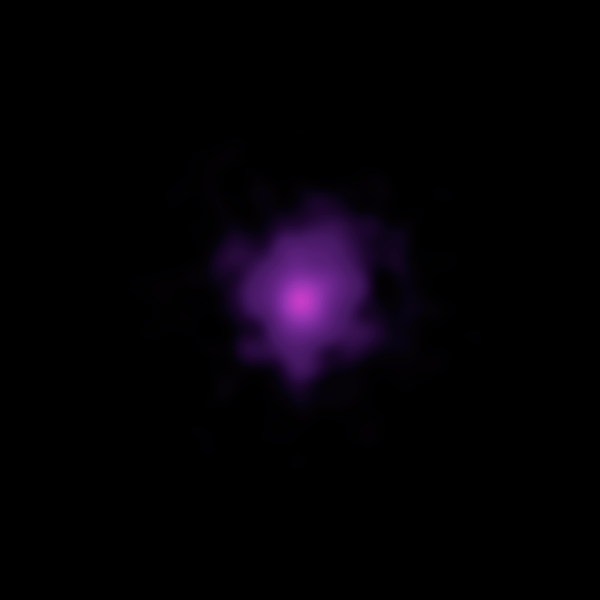NuSTAR discovers first ultraluminous pulsar, impossibly bright dead star

Astronomers working with NASA's Nuclear Spectroscopic Telescope Array (NuSTAR) have found a pulsating dead star beaming with the energy of about 10 million suns. The object, previously thought to be a black hole because it is so powerful, is in fact a pulsar – the incredibly dense rotating remains of a star. It is located in the a relatively nearby galaxy known as Messier 82 (M82), or the Cigar Galaxy, and is the first ultraluminous pulsar ever detected.
Dom Walton, a postdoctoral scholar at Caltech who works with NuSTAR data, says that with its extreme energy, this pulsar takes the top prize in the weirdness category. Pulsars are typically between one and two times the mass of the sun. This new pulsar presumably falls in that same range but shines about 100 times brighter than theory suggests something of its mass should be able to.
Besides being weird, the finding will help scientists better understand a class of very bright X-ray sources, called ultraluminous X-ray sources (ULXs).
"This compact little stellar remnant is a real powerhouse. We've never seen anything quite like it," says Fiona Harrison, NuSTAR's principal investigator and the Benjamin M. Rosen Professor of Physics at Caltech. "We all thought an object with that much energy had to be a black hole."

The galaxy Messier 82 (M82) is seen here in two different lights. A visible-light view from NASA's Hubble Space Telescope is at left, and an X-ray view from NASA's Chandra X-ray Observatory is at right. The comparison highlights how different the universe can look when viewed in other wavelengths of light. M82 is located 12 million light-years away in the Ursa Major constellation. Image credit: NASA/STScI/SAO
Earlier this year, astronomers in London detected a spectacular, once-in-a-century supernova (dubbed SN2014J) in the Cigar Galaxy, 12 million light-years away. Because of the rarity of that event, telescopes around the world and in space adjusted their gaze to study the aftermath of the explosion in detail.

High-energy X-rays streaming from a rare and mighty pulsar (magenta), the brightest found to date, can be seen in this new image combining multi-wavelength data from three telescopes. The bulk of a galaxy called Messier 82 (M82), or the "Cigar galaxy," is seen in visible-light data captured by the National Optical Astronomy Observatory's 2.1-meter telescope at Kitt Peak in Arizona. Starlight is white, and lanes of dust appear brown. Low-energy X-ray data from NASA's Chandra X-ray Observatory are colored blue, and higher-energy X-ray data from NuSTAR are pink. The magenta object is what's known as an ultraluminous X-ray source, or ULX — a source of blazing X-rays. Collage image credit Caltech.
Besides the supernova, M82 harbors a number of other ULXs. When Matteo Bachetti of the Université de Toulouse in France, the lead author of a new paper published in the current issue of Nature, took a closer look at these ULXs in NuSTAR's data, he discovered that something in the galaxy was pulsing, or flashing light.

The brightest pulsar detected to date is shown in this animation that flips back and forth between images captured by NASA's Nuclear Spectroscopic Telescope Array, or NuSTAR. The animation was created by stacking NuSTAR images taken both while the pulsar was "on" and "off," meaning its beams were either pointed toward Earth or away from us and not visible. Image credit: NASA/JPL-Caltech
"That was a big surprise," Harrison says. "For decades everybody has thought these ultraluminous X-ray sources had to be black holes. But black holes don't have a way to create this pulsing."
But pulsars do. They are like giant magnets that emit radiation from their magnetic poles. As they rotate, an outside observer with an X-ray telescope, situated at the right angle, would see flashes of powerful light as the beam swept periodically across the observer's field of view, like a lighthouse beacon.
Surprised to see the flashes coming from M82, the NuSTAR team checked and rechecked the data. The flashes were really there, with a pulse showing up every 1.37 seconds.
The next step was to figure out which X-ray source was producing the flashes. Walton and several other Caltech researchers analyzed the data from NuSTAR and a second NASA X-ray telescope, Chandra, to rule out about 25 different X-ray sources, finally settling on a ULX known as M82X-2 as the source of the flashes.

This animation shows a neutron star – the core of a star that exploded in a massive supernova. This particular neutron star is known as a pulsar because it sends out rotating beams of X-rays that sweep past Earth like lighthouse beacons. Credit: NASA/JPL-Caltech
With the pulsar and its location within M82 identified, there are still many questions left to answer. It is many times higher than the Eddington limit, a basic physics guideline that sets an upper limit on the brightness that an object of a given mass should be able to achieve.
"This is the most extreme violation of that limit that we've ever seen," says Walton. "We have known that things can go above that by a small amount, but this blows that limit away."
Source: Caltech
Reference:
- "An Ultraluminous X-ray Source Powered by An Accreting Neutron Star" – Nature, 514 (7521). pp. 202-204. ISSN 0028-0836 – October 9, 2014 – http://resolver.caltech.edu/CaltechAUTHORS:20140804-165311189
Featured image: High-energy X-rays streaming from a rare and mighty pulsar (magenta), the brightest found to date. Credit: Caltech.

Commenting rules and guidelines
We value the thoughts and opinions of our readers and welcome healthy discussions on our website. In order to maintain a respectful and positive community, we ask that all commenters follow these rules.